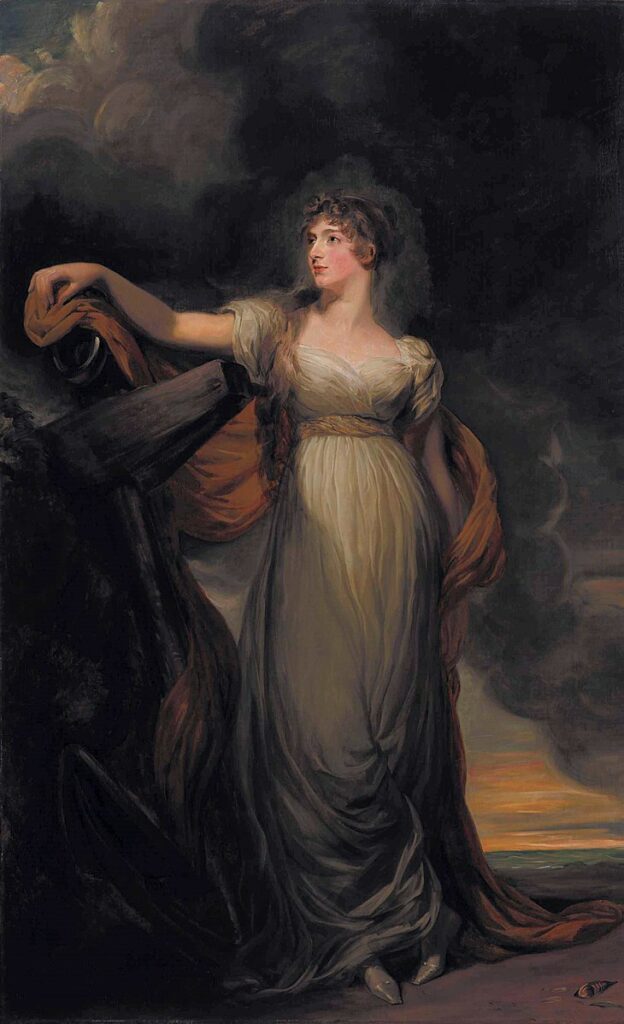
This blog is part of series linked to our exhibition, More than Pretty, which looks at body decoration of girls throughout history. Check out the exhibition here.
The recent TV series Bridgerton has catapulted the Regency era to popularity, with the beautiful costumes and sets matched with inspiring hair and makeup. Jane Austen is the figure most associated with this era, showing us the two sides to Regency Britain. So let’s look at what changed from the Georgian years. The idea Regency beauty would have a natural look, a fresh wind swept face, a clear complexion maintained by skincare not cosmetics, and no tan or freckles. With the big high maintenance hair styles gone, girls in the late 18th and early 19th century were able to wash more often. They would brush their hair in their daily regime. First, a fat-based scented pomatum was massaged into your hair to condition it. It was kind of like the hair wax you can buy today. This was followed by your head being dusted with a protein-rich powder made from ground up bones, which absorbed excess oil and dirt like a modern dry shampoo would. Then alternating with a brush and a comb, you would vigorously remove the excess powder and any dirt with it. Then your hair was ready to be put up in a simple chignon, with a few curls loose around the face. As natural hair colours were back in fashion, hair dyes were rare. Curling tongs would be the only equipment you needed to style your hair. You need to make sure you had those curls to frame your face.
The ideal look was natural, but this didn’t mean no makeup. Only older women or those considered to be of disrepute wore heavy makeup with lots of white paint and rouge. Teenagers would have used minimum white powder to cover a blemish or none at all. They moved away from lead based powder towards corn starch, chalk, rice powder or talc mixed with aromatic water for their faces. Any powder needed to look natural so girls would tint the white powder with household pantry items to match their skin tone. The Ancient Egyptians had become very popular so mascara and eyeliner were back in. Black soot from lamps or burnt cork mixed with oil was used achieve this look. It was difficult to get the desired fine line from the mix but this didn’t make it unpopular. A little colour to the cheeks was essential. Rose pink safflower, carmine and red sandalwood mixed with white powder were all used to make these blushers. A light dusting on the cheek bones was all that was needed. It was more like a modern blusher than dark Georgian rouge. The lips too needed a little colour, applied with a gloss rather than a lipstick. The lip pomade or salve was made from the same powders as the blusher. By this time buying branded cosmetics was fairly common. One of the most popular brands was Rose Lip Salve, made from almond oil, white wax, alkanet to add colour, and otto of roses to add scent. A pearly white smile was desired but dentistry was not a developed industry at this time. However toothbrushes had become available to buy with your cosmetics, which started the trend of brushing teeth daily. Slowly we can see more of the modern cosmetic industry starting to develop with brands and advertising. More cosmetics were store brought than homemade. Washing and bathing still have a way to go, but we are getting closer to more modern ideas of hygiene and washing.
In the next installment, we look at the Victorians.
-Monique Brough
Curator
Girl Museum Inc.
For more information, check out
https://janeaustensworld.wordpress.com/tag/regency-hairstyle/
https://hair-and-makeup-artist.com/womens-regency-makeup/
http://hibiscus-sinensis.com/regency/cosmetics.htm
